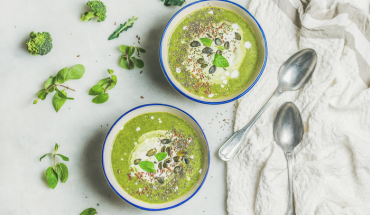The lucrative business of Skin microbiome research: University of Bradford scientists are helping open new areas of research into the skin microbiome – a commercial marketplace which could be worth as much as $1.85bn in the coming decade.
Much like the better-known gut microbiome, which is a collection of friendly bacteria, the skin has its own community of microorganisms, whose job is to protect us from infection and maintain a healthy state. However, scientists are only now beginning to understand the scope and complexity of the skin microbiome, which makes it an area ripe for new research and potential discoveries that could lead to new healthcare treatments.
The University of Bradford has already established itself as a leading centre of expertise, thanks to the commercial success of the Centre for Skin Sciences over the past decade. Its leadership, under Prof Julie Thornton, of the multi-disciplinary UKRI-funded Skin Microbiome in Healthy Ageing (SMiHA) project, one of 11 new networks funded by BBSRC/MRC providing the largest exploration of ageing science in the UK’s history, will help drive capacity for research and innovation in the UK.
The University works with an extensive portfolio of companies, including, in skin research, household names such as Aveda/Estée Lauder, BASF and Johnson & Johnson – and its research outputs formed part of the recent Research Excellence Framework 2021 (published in May 2022).
Dr Gillian Westgate is business development manager in the Centre for Skin Sciences, in the Faculty of Life Sciences. She is a member of the Society of Cosmetic Scientists, and a co-founder and Chair of Cosmetics Cluster UK, a networking organisation for the sector and she brings over 30 years industry experience to her roles.
She said: “Many companies do not have the capacity to do this sort of research in-house, nor the breadth of knowledge, or research environment. Ultimately, companies have a choice of how they commission research, but when they choose to work with a university, such as ours, they not only get what they asked for but also the benefit of the wider research environment.
“We carry out research for companies that make active ingredients and finished products – things like skin creams and shampoo… It is important for consumers to trust the products they buy, and our work provides the manufacturers with valuable scientific insights.”
Most recently, the University organised and led a ‘sandpit’ event with the SMiHA network, bringing together experts from industry and academia, including other university partners in the SMiHA skin microbiome network: Liverpool, Manchester, East Anglia, and Queen Mary University London. The SMiHA network is supported by the recently appointed network manager Rachael Williams, who has just completed her PhD on skin ageing.
Prof Julie Thornton said: “As the only network focused on skin, SMiHA aims to discover more about the role of the microbiota that live on our body and how this community of microorganisms contribute to health and wellbeing, especially in older people.
She added: “Feedback from all participants demonstrated an overwhelming desire and excitement to work together with industry in this network.”
“Areas of innovation that were raised as priority included women’s health and to understand the impact of the menopause in skin, as well as in intimate health; acne and wound care strategies, working with the microbiome as opposed to conventional anti-microbial approaches, and the need to develop laboratory models to explore innovative approaches to managing skin health via targeting the microbiome.”
To facilitate the development of these priorities, SMiHA will soon be launching a small projects fund which organisers hope will attract ‘matched funding’ from industry. It will have an open brief, a competitive bidding process and is designed to leverage larger funded projects in the future. The fund will also be used to facilitate researcher exchanges. For example, businesses can host an academic with skin microbiome expertise to help with a business-related project.
FACTFILE: DID YOU KNOW?
The skin microbiome consists of billions of bacteria, with around a billion for each square centimetre
Children born via C-section will have different biomes than if they were born naturally
Some skin conditions are associated with the disruption of the skin microbiota
Each person’s skin microbiome is unique and changes as you get older
Skin disorders occur from tiny infants to the very elderly and some 50% of the UK population suffer a microbiome associated skin complaint each year; management of infected wounds alone utilise 5.5% of total NHS expenditure
- New lipid-based pathway discovered as key to memory formation - 25th June 2025
- Crucial link could explain how Alzheimer’s takes hold - 25th June 2025
- Understanding Your Mind Can Improve Daily Life - 25th June 2025






